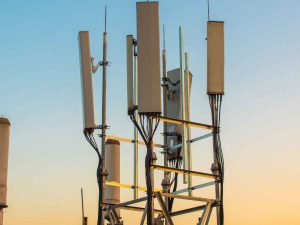5G Network Architecture, Planning and Design

Course Overview
This course provides a comprehensive understanding of 5G network architecture, planning, and design, covering the technological advancements that define the next generation of mobile networks beyond 4G/IMT-Advanced standards.
Participants will explore key 5G technologies, including Massive MIMO and advanced transceivers with beamforming, improving spectral efficiency and network performance. The course will cover beam sweeping techniques, optimizing coverage and connectivity, along with carrier aggregation, allowing the combination of multiple frequency bands to enhance throughput.
The course will also delve into 5G’s flexible frame structure, covering numerology, subcarrier spacing (SCS), and physical channels, enabling diverse use cases with varying latency and bandwidth requirements. Multi-connectivity and aggregation concepts, such as LTE + NR Dual Connectivity, and use of Multiaccess Edge Computing (MEC) will be discussed to highlight the seamless transitions between legacy and next-generation networks.
A deep dive into distributed flexible architecture will include the role of Central Unit (CU) and Distributed Unit (DU) in 5G network deployments, ensuring efficient traffic management and low-latency services. Essential planning and design considerations to optimize network performance, such as MAPL calculation, CI/CIF propagation models, Physical Resource Block (PRB) allocation, and Physical Cell Identity (PCI) management, will also be covered.
Additionally, the course will address 5G security and authentication mechanisms, including Security Anchor Function (SEAF), Authentication Server Function (AUSF), Subscription Permanent Identifier (SUPI), and Subscription Concealed Identifier (SUCI), ensuring secure communication in next-generation networks.
Participants will gain insights into real-world 5G use cases, such as IoT, Smart Cities, Autonomous Driving, low-latency remote control, and Device-to-Device (D2D) communication, evaluating how 5G networks outperform 4G in speed, agility, and intelligence.
Target Audience
- Telecom Engineers & Network Architects
- RF Engineers & Wireless Communication Specialists
- Network Operators & Service Providers
- Regulatory Authorities & Policy Makers
- IT & Cybersecurity Professionals
- 5G Deployment & Infrastructure Teams
Duration & Training Format
- Classroom: 5 days
- LIVE Virtual: 35 hours
*Note:
- A minimum of 8 or more participants is required for a Classroom session to commence.
- A minimum of 6 or more participants is required for a LIVE Virtual session to commence.
- LIVE Virtual courses can be conducted for 5 hours or 7 hours daily. Please note that the number of training days will be extended if you opt for 5 hours daily.
Upcoming Course Dates
Course Objectives
This course aims to provide students with necessary skills for planning and performing 5G network design process. At the end of the course, the participants would be able to:
- Describe what 5G is
- Describe the 5G technology drivers
- List the 5G features and their benefits
- Describe the 5G network architecture and its key technologies
- Illustrate the 5G architecture and components
- Describe typical 5G Use Cases and deployment scenarios
- Describe the conditions necessary to support 5G deployments
- Describe how to deploy 5G Small cells for their coexistence with pre-5G macro cells
- Describe advanced wireless technology concepts like Massive MIMO, Virtualized RAN, etc.
- Calculate the link budget in 5G
- List the most important phases in 5G design
- Ensure secure 5G deployments using modern authentication and encryption methods
- Explore real-world applications such as Smart Cities, D2D, and remote-control systems
- Lead 5G migration and deployment projects
- Plan optimized 5G RAN/Core networks
- Leverage AI/ML and slicing for differentiated services
- Understand standardization and compliance from 3GPP Releases
- Design indoor and outdoor 5G systems using best-in-class practices
Course Outline
- 5G Introduction
- The Way to 5G
- New Services Proposed
- ITU 5G Use Cases
- 5G Assumptions and Technical Expectations
- Critical MTC: Communications Distance vs. Latency
- Summary of 5G Technology Capabilities
- The Evolution of 5G
- What are Small Cells in 5G Technology?
- IMT 2020
- 5G Performance Requirements
- Capacity Increase
- Five Key Technology Components of 5G
- New Spectrum Opportunities
- 5G Spectrum from 300 MHz to 90 GHz
- Cm and mmWaves
- Viable Frequencies
- Different Spectrum for Different Use Cases
- Sub 6 GHz New Radio Band
- 5G mmWave Antenna Module
- Definition of Frequency Ranges
- 5G NR Operating Bands
- Supplementary Uplink and Downlink
- Massive MIMO and Advanced Transceivers
- Interference and Beamforming
- Angle of Arrival
- Massive MIMO
- 3GPP MIMO Modes Summary
- Deploying Many Antennas Below 6 GHz
- Digital / Analog / Hybrid Beamfoarming
- Channel State Information
- Beams in Vertical and Horizontal Plane
- Beam Sweeping
- Beams per UE and for Common Control Channels
- Cell Layout
- Cross-Polarized Beams for Tx Diversity / MIMO
- Carrier Aggregation
- Subcell
- DL and UL Transmission
- Beam Allocation per TTI
- Scheduler
- Carrier and PRB Selection
- Flexible Frame Structure
- Physical Resource Block (PRB)
- Numerology and SCS
- PHY Layer – Frame Structure (Time Domain)
- DL:UL Frame Arrangements
- Subframe Types
- Multi Connectivity and Aggregation
- LTE + NR Dual Connectivity
- DC Frequency Bands 3GPP TS37.863
- Interworking and Migration Strategy
- Distributed Flexible Architecture
- gNB Architecture
- DU and CU Options
- Benefits of RAN Spilt Architecture
- 5G Reference Network Architecture
- Core Network Architecture
- 5GCN Elements
- Multi-Access Edge Computing (MEC)
- Concurrent Access to Local and Central DN
- LADN
- MEC Reference Architecture
- NR Features – Rel 17, 18 and 19
- Key Milestones for 5G Research and Developments
- Timeline for 5G Standards and Roll-Out
- 5G Chipset and Devices Timeline
- 3GPP Standards
- Side Link
- RedCap
- Artificial Intelligence in 5G
- Non-Terrestrial Networks (NTN) – Satellite and HAPS Support
- Network Energy Efficiency
- 5G Network Slicing
- Requirements Grouped by Category
- 5G Radio / Core Network Deployment Scenarios
- Standalone vs. Non Standalone
- Comparison of EPC and 5GCN
- Stateless VNF Machines
- Distributed Cloud Deployment
- Slicing for Enterprise, IoT, and URLLC
- Slice Management Architecture
- Data-Driven Orchestration
- Call Flow Examples
- Initial Attach Procedure and Re-Attach Procedure
- Connection Establishment Flow
- Uplink PDU Transfer Flow
- Set-Up of a PDU Session
- Intra-System Intra-RAT Mobility
- Intra-New RAN Handover using In-Band Path Switch over NG-U
- 5G Network Planning Fundamentals
- Goal of Radio Network Design
- Overview of Radio Network Design Process
- 5G Spectrum
- Input – Environment Parameters
- Radio Network Planning Phases
- 5G Link Budget
- MAPL Calculation
- 5G Link Budget – Inputs and Steps
- SINR Look-Up Tables
- Resource Allocation
- MCS Mapping Table – 64QAM
- Work Flow
- Exercise
- 5G Macro and Indoor Cell Range Calculation
- Propagation Model
- Okumura-Hata and Cost-Hata Propagation Models
- Cell Range
- 3GPP Propagation Models
- Comparison of Propagation Models
- 5G Link Budget 28 GHz – Assumptions
- Downlink Throughput at Uplink Cell Edge Estimation
- CI/CIF propagation models
- Standard Propagation Model
- Propagation Model Parameters
- Diffraction Loss Clutter Loss Cost
- RF Design
- Steps
- Coverage Prediction
- Cyclic Prefix Selection
- Physical Cell ID – PCI
- Suggested Planning Rules Order
- Digital Beamforming – Beam Set Selection
- Average Cell Capacity Calculation
- Spectral Efficiency Values
- Indoor Coverage and Small Cells
- Indoor Propagation
- Material Properties
- Scaling the Indoor Plan
- Antenna Definition
- gNodeb Parameters
- Antenna Position
- Coverage Prediction
- Shared Carrier Deployment
- Adjacent Small Cell Deployment
- HetNet – Planning
- Methodology of Data Analysis
- Small Cell Range Extension (CRE)
- Active Antenna System
- What is Active Antenna System (AAS)?
- RRH vs AAU
- 3D Aspect of AAS
- AAS Degrees of Freedom
- Active Antenna at the Site Design Level
- Site Solution Design & Construction
- mMIMO Antenna
- 5G Deployment Strategies
- 3GPP 4G to 5G Options Strategy
- 5G Deployment Options Summarised
- Spectrum Availability
- Devices Availability
- Fixed Wireless Access
- 5G Early Deployment Use Cases
- 5G for Urban Evolution
- 5G NR in Low-Band
- Radio Network Design Targets
- Example: APAC Asian City
- NR-NSA and SA Network Deployment
- Transport Network Deployment Considerations
- 5G Mass Deployment
- Security in the Transport Layer
- Software Defined Network (SDN)
- 5G Security
- 5G Security Drivers
- Non-Standardized Network Security Measures
- Elements of a 5G Security Architecture
- SDN Security
- NFV Security
- Major 5G Security Issues
- Network Slicing and Network Slice Isolation
- Status in 5G Security Standardization
- SEAF / ARPF / SEPP
- Authentication Protocols
- Key Hierarchy
- SUPI and SUCI
- Multiple Registrations
- Inter Operator Network Security
Pre-requisites
- A basic understanding of IP-based communications
- A basic understanding of radio principles and network air interfaces
Testimonials





